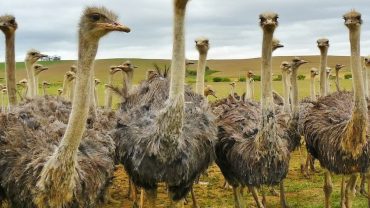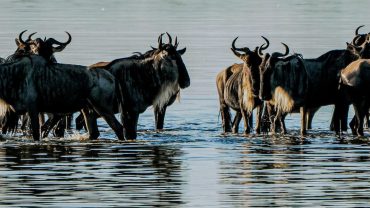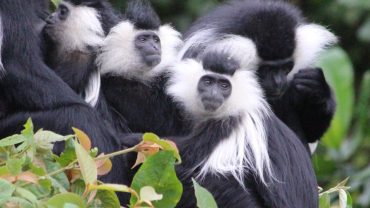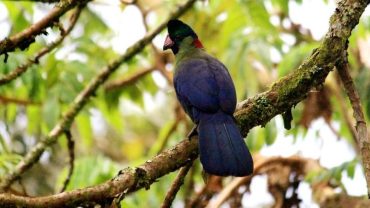The Great Wildebeest Migration is one of the most spectacular natural events on the planet, captivating the hearts and minds of adventurers and nature enthusiasts alike. Every year, millions of wildebeest, accompanied by zebras and gazelles, embark on a journey across the vast plains of East Africa in search of greener pastures and water sources. While the migration itself is awe-inspiring, there are certain factors that make it even more thrilling, especially when considering the different places these majestic creatures cross each month of the year.
January: Serengeti National Park, Tanzania
As the year begins, the wildebeest herds congregate in the southern Serengeti, where the calving season takes place. Witnessing the birth of thousands of wildebeest calves is a heartwarming experience and a testament to the cycle of life in the wild. The lush grasslands provide ample food for the newborns, attracting predators like lions and cheetahs, offering visitors the chance to witness incredible wildlife interactions.
February: Southern Serengeti, Tanzania
As February unfolds, the wildebeest herds continue to graze in the southern Serengeti, taking advantage of the abundant vegetation. This is an excellent time for photography enthusiasts, as the landscapes are green and vibrant, providing stunning backdrops for capturing the beauty of the migration.
March: Serengeti Plains, Tanzania
By March, the herds start their northward journey towards the Serengeti Plains, crossing the vast grasslands in search of fresh grazing grounds. This is a prime time for witnessing river crossings, as the wildebeest navigate through crocodile-infested waters, showcasing their resilience and determination to reach their destination.
April: Grumeti Game Reserve, Tanzania
As the wildebeest make their way through the Grumeti Game Reserve, they encounter a variety of obstacles, including steep riverbanks and dense vegetation. This creates thrilling opportunities for game drives, as visitors have the chance to witness dramatic chases and narrow escapes between predators and prey.
May: Western Corridor, Tanzania
In May, the wildebeest reach the Western Corridor of the Serengeti, where they face the ultimate challenge: crossing the Grumeti River. This is perhaps one of the most adrenaline-pumping experiences of the migration, as the wildebeest plunge into the swirling waters, risking their lives to reach the other side. Crocodiles lie in wait, adding an extra element of suspense to the spectacle.
June: Northern Serengeti, Tanzania / Masai Mara, Kenya
By June, the wildebeest have crossed into the northern Serengeti and the neighboring Masai Mara in Kenya. This marks the climax of the migration, as the herds gather on the banks of the Mara River, preparing for another treacherous crossing. The sight of thousands of wildebeest stampeding across the river is nothing short of breathtaking, drawing visitors from around the world to witness nature’s grandeur.
July: Masai Mara, Kenya
In July, the wildebeest continue to roam the plains of the Masai Mara, feasting on fresh grasses and dodging predators at every turn. This is a prime time for wildlife enthusiasts, as the abundance of prey attracts a diverse array of predators, including lions, leopards, and hyenas, providing endless opportunities for thrilling game viewing experiences.
August: Masai Mara, Kenya
As August unfolds, the wildebeest begin their journey back south, retracing their steps through the Masai Mara. This is a poignant reminder of the cyclical nature of the migration, as the herds make their way back to the Serengeti in search of new grazing grounds.
September: Masai Mara, Kenya / Northern Serengeti, Tanzania
In September, the wildebeest cross back into the northern Serengeti, marking the end of their epic journey. This is a time of celebration and reflection, as the herds reunite with their counterparts and settle into the familiar landscapes of the Serengeti once again.
The Great Wildebeest Migration is a testament to the beauty and resilience of nature, captivating audiences with its awe-inspiring spectacle. Whether witnessing the birth of calves in the southern Serengeti or the dramatic river crossings in the Masai Mara, each month offers unique opportunities for adventure and discovery. So, pack your bags, grab your camera, and join on the journey of a lifetime as you witness the wonders of the wildebeest migration year-round.







Comment (0)